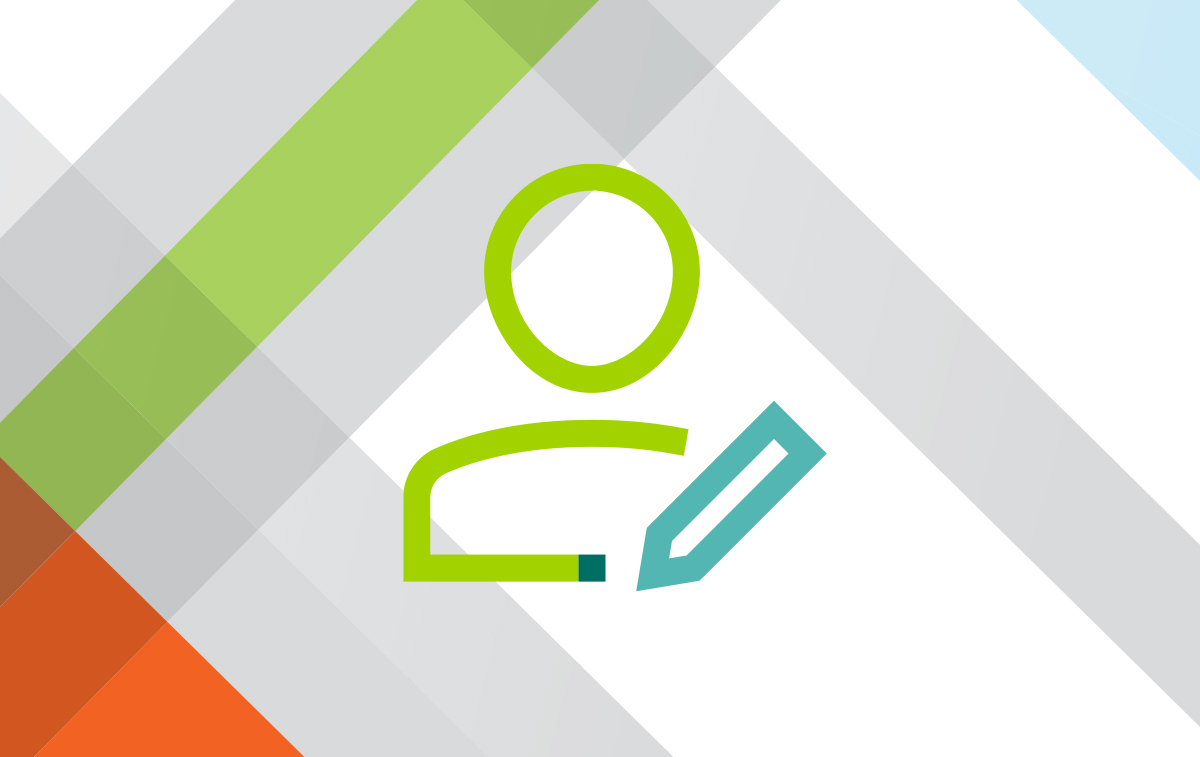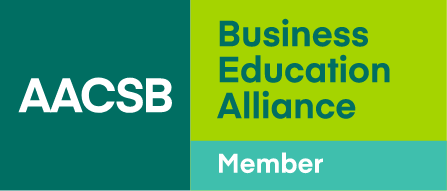Research Roundup: April 2025
Explore new research on ethical emotional intelligence, confident employee behavior, innovation slowdowns, knowledge theft, and AI’s uneven rise in HR.
Dive into our monthly Research Roundup, showcasing the latest insights from the business education community to keep you informed of new and noteworthy industry trends. Here are this month’s selections:
Emotional Intelligence at the Edge of Ethics
- Researchers: Christophe Haag, Emlyon Business School; Clément Poirier, Université Paris Descartes; Lisa Bellinghausen, Qualia Emotion Institute
- Output: “Emotional Intelligence and the Dark Triad: A Latent Profile Analysis to Investigate the Jekyll and Hyde of the Emotionally Intelligent Manager,” Frontiers in Psychology, 2024.
- Overview: Emotional intelligence is often viewed as a leadership strength, but can it also be used to manipulate? This study examines how managers’ emotional skills relate to the dark triad, a trio of personality traits including psychopathy, narcissism, and Machiavellianism that are associated with unethical behavior in the workplace. Researchers focused on ability emotional intelligence (AEI), which reflects a person’s capacity to recognize, understand, and manage emotions.
Unlike in self-report surveys, AEI was measured using QEPro, a performance-based test tailored to managerial settings. Through latent profile analysis, the researchers identified two distinct emotional intelligence profiles among 231 French managers: full emotional processing (FEP) and minimal emotional processing (MEP). The study aimed to uncover whether emotionally capable managers use their skills ethically or strategically. - Findings: Managers in the FEP group, who scored higher across emotional intelligence dimensions, were significantly less Machiavellian than those in the MEP group. This suggests that emotionally skilled leaders are less inclined to manipulate others for personal gain. Specifically, FEP managers scored two points lower on Machiavellianism, a meaningful gap that points to a behavioral difference.
No significant links were found between emotional intelligence and the other two dark triad traits, psychopathy and narcissism, indicating that AEI is not broadly associated with toxic leadership.
While some critics argue that emotional intelligence can be used manipulatively, this study suggests it may instead serve as a safeguard against unethical behavior.
For organizations, prioritizing emotional intelligence in leadership development and hiring may be a strategic step toward building healthier, more principled workplace cultures.
Confidence that Builds, Not Breaks
- Researchers: Roberta Fida, Aston University; Ivan Marzocchi and Claudio Barbaranelli, Sapienza University; Mamoona Arshad, De Montfort University; Marinella Paciello, Uninettuno Telematic International University; Carlo Tramontano, Coventry University
- Output: “Self-Efficacy and Nontask Performance at Work. A Meta-Analytic Summary,” Personality and Individual Differences, 2025.
- Overview: Self-efficacy is the belief in one’s ability to manage responsibilities and navigate challenges successfully. While it is well known for its influence on task performance, this study explores whether self-efficacy influences how employees behave outside of their formal job duties. The research focuses on non-task performance, which includes two key areas: citizenship behaviors, such as helping colleagues or suggesting improvements, and counterproductive behaviors, such as gossip or sabotage.
Drawing on data from 158 papers and more than 60,000 employees worldwide, the authors investigate whether self-efficacy predicts these behaviors and helps employees respond more constructively under stress. They also explore whether general self-efficacy shapes behavior differently than work-specific confidence. Ultimately, the authors aim to understand whether confident employees contribute more to positive work environments and avoid harmful behaviors. - Findings: Employees with high self-efficacy were 45 percent more likely to engage in citizenship behaviors like helping others, speaking up with ideas, and going beyond their job descriptions. They were also 24 percent less likely to engage in harmful behaviors such as workplace deviance or knowledge hiding. These results were consistent across both general and job-specific forms of self-efficacy.
In high-pressure settings, self-efficacious employees were better able to resist negative behaviors and maintain constructive engagement. However, when it came to riskier forms of extra-role behavior, such as voicing criticism, the influence of self-efficacy was less reliable. These insights suggest that developing employee confidence improves task performance and strengthens ethical, collaborative, and resilient workplace cultures for organizations.
One Smart Change Too Many
- Researchers: Yudi Huang and Sebastien Martin, Northwestern University; Zhiwei (Tony) Qin, forevea.ai
- Output: “The Trap of Complexity in Experimentation,” SSRN Working Paper, 2025.
- Overview: Experimentation drives innovation in today’s fastest-growing companies. But while testing and iterating often lead to better products, this study uncovers a deeper risk: constant improvements can quietly make systems more complex and harder to evolve. In this case, complexity refers to technical systems, decision-making, testing processes, and team interactions.
As complexity builds, each new experiment becomes slower and less effective. The researchers set out to understand when companies cross the line from agile to tangled, where even smart, data-backed changes begin to work against long-term progress. The study offers a model to help organizations balance today’s wins with tomorrow’s flexibility. - Findings: The study shows that at a certain point, adding complexity may seem like the logical next step, even if it quietly works against long-term innovation. This situation creates a dilemma: experimentation becomes harder, but stopping feels riskier than continuing. For example, when Lyft introduced a dynamic reinforcement learning system to match drivers and riders, the change boosted revenue by over 30 million USD annually. However, it also made future experiments far more difficult, requiring longer test cycles and tighter team coordination.
The study’s simulations reflect similar dynamics. Even small changes, such as adding a pricing feature or adjusting a customer flow, can create ripple effects that slow down innovation, particularly in complex systems where many components are closely connected. Tools like rollbacks, which let teams undo changes, can help—but only if companies actively maintain a culture of simplification. The most resilient organizations build this into their strategy by regularly reviewing their systems and protecting their ability to test, learn, and adapt at scale.
My Work, Your Name, Our Breakdown
- Researchers: David Zweig and Alycia Damp, University of Toronto; Kristyn A. Scott, Toronto Metropolitan University
- Output: “It’s Mine but You Took It: Knowledge Theft as a Barrier to Organizational Knowledge Management Efforts,” Journal of Knowledge Management, 2025.
- Overview: Ideas are powerful, but what happens when someone takes credit for yours? This study introduces “knowledge theft” as a measurable and distinct workplace behavior, defined as the deliberate act of claiming ownership over another person’s contributions. Despite frequent mentions in the business press, knowledge theft has never been formally studied.
The researchers created and validated a five-item scale, using input from more than 1,500 participants across seven diverse samples. They aimed to distinguish knowledge theft from other forms of interpersonal deviance, such as aggression or social undermining, and to understand how it disrupts organizational knowledge flow. The findings clearly show how intellectual ownership can break down team collaboration and trust. - Findings: Over half of the participants in one study reported having their work taken without proper credit, ranging from stolen proposals to ideas presented in meetings as someone else’s. Those who experienced knowledge theft were significantly more likely to withhold information, remain silent, or withdraw support from colleagues’ behaviors, directly disrupting knowledge management.
These responses fall into two categories: anticipatory actions, like defensive silence and knowledge hiding, and reactionary behaviors, including interpersonal conflict and disengagement. The data also show that these effects often carry over into future roles. Employees who experienced knowledge theft in past jobs reported similar behaviors in new organizations, indicating a lasting impact. For leaders, recognizing contributions and building a culture of trust is essential to protecting knowledge as a core business asset.
AI in HR Isn’t Failing, but It’s Not Flying Either
- Researchers: Dirk Buyens and Sarah Quataert, Vlerick Business School; Nikola Trbovic and Ellen Volckaert, Hudson
- Output: “It’s Not a Priority, but Everyone’s Talking About It: AI in HR,” HR Barometer Report, 2025.
- Overview: Despite the growing attention around artificial intelligence, HR leaders aren’t rushing in. AI was chosen as the spotlight theme for this year’s HR Barometer, but it ranked just 21st out of 25 in priority, and HR teams reported the lowest level of mastery across all domains. This study explores how AI is currently used in HR, what drives adoption, and what barriers slow momentum.
Responses from 123 of Belgium’s largest companies show a field in early stages, marked more by experimentation than integration. While recruitment and HR operations show early signs of traction, most other areas remain untouched. The report aims to understand why this gap between AI’s promise and its use persists—and what it will take for HR to move from exploration to impact. - Findings: Only 6 percent of HR departments reported extensive use of AI, while 36 percent are still experimenting, 27 percent are just beginning to explore. Recruitment leads adoption, with 70 percent using AI to support tasks like drafting job ads and sourcing candidates—areas where the technology is more mature and immediate time savings are clear. HR operations is the next most common area, followed by onboarding and service delivery. Still, adoption is lagging across most other domains.
A key reason is capability: HR teams cite lack of in-house expertise, limited time and budget, and poor data quality as top barriers. Ethical concerns and regulatory uncertainty, particularly in Europe, also contribute to a wait-and-see approach. While 86 percent of HR leaders say they intend to use more AI, only 18 percent currently measure return on investment, often because usage remains fragmented or led by individuals rather than integrated into broader HR systems.
For organizations, unlocking the value of AI in HR may depend less on tools and more on building the skills, structures, and shared confidence to use them effectively.
If you have new research from your school share with the business education community, please submit a summary and relevant links to AACSB Insights via our online submission form at aacsb.edu/insights/articles/submissions.




